TimeShift is a powerful tool for managing and recovering system snapshots on a Debian desktop. It allows users to easily roll back to previous system states, ensuring system stability and data integrity.
Key Features:
- Automated Snapshots: Schedule regular system snapshots to maintain up-to-date backups.
- Incremental Backups: Efficiently store only changes since the last snapshot, saving disk space.
- User-Friendly Interface: Intuitive GUI for managing snapshots without requiring command-line expertise.
- BTRFS and RSYNC Support: Compatible with multiple filesystem types for flexible usage.
- Selective Restore: Recover specific files or entire systems based on need.
- Boot Recovery: Restore snapshots directly from the boot menu in case of system failure.
Using TimeShift on a Debian desktop, users can protect their systems against accidental changes, software failures, or malicious attacks. With the introduction out of the way, let’s explore how to install TimeShift on Debian utilizing terminal commands and various methods.
Step 1: Update Debian System Before Timeshift Installation
Before starting, update your system with the following terminal command:
sudo apt update && sudo apt upgradeStep 2: Install Timeshift via APT Command
The Debian default repository already includes the TimeShift application, so installing Timeshift is straightforward. Install the software with this command:
sudo apt install timeshiftStep 3: Launch Timeshift User Interface
After installing Timeshift on your Debian system, open the software immediately with the cli command from your command terminal:
timeshiftOr, launch the software using its graphical application icon by navigating to:
Activities > Show Applications > Timeshift
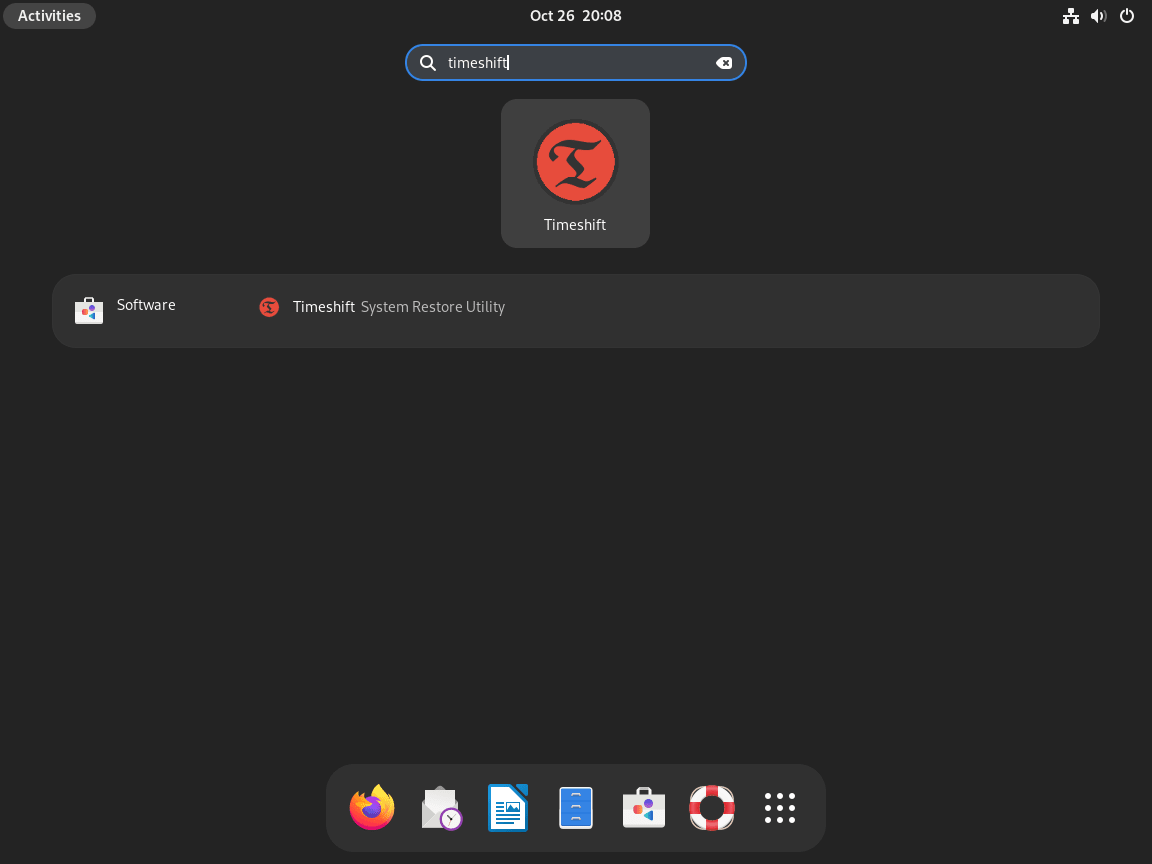
Additional Learning: Quick Tips on Creating Snapshots with Timeshift
Step 1: Understanding Timeshift Modes
Timeshift is a powerful tool designed to create system snapshots. These snapshots act as checkpoints, which can be reverted to if needed.
Rsync Mode
When using Timeshift in the Rsync mode, the tool employs both rsync and hard links to generate snapshots efficiently. This mode’s brilliance lies in its ability to share standard files across multiple snapshots. This approach ensures that disk space usage is optimized and the creation of snapshots is expedited.
BTRFS Mode
Contrastingly, in the BTRFS mode, Timeshift taps into the capabilities of the BTRFS file system for snapshot generation. However, a crucial point is that the BTRFS mode is tailored explicitly for systems that align with the Ubuntu-type subvolume layout. If your Debian system doesn’t conform to this layout, it’s prudent to utilize the Rsync mode.
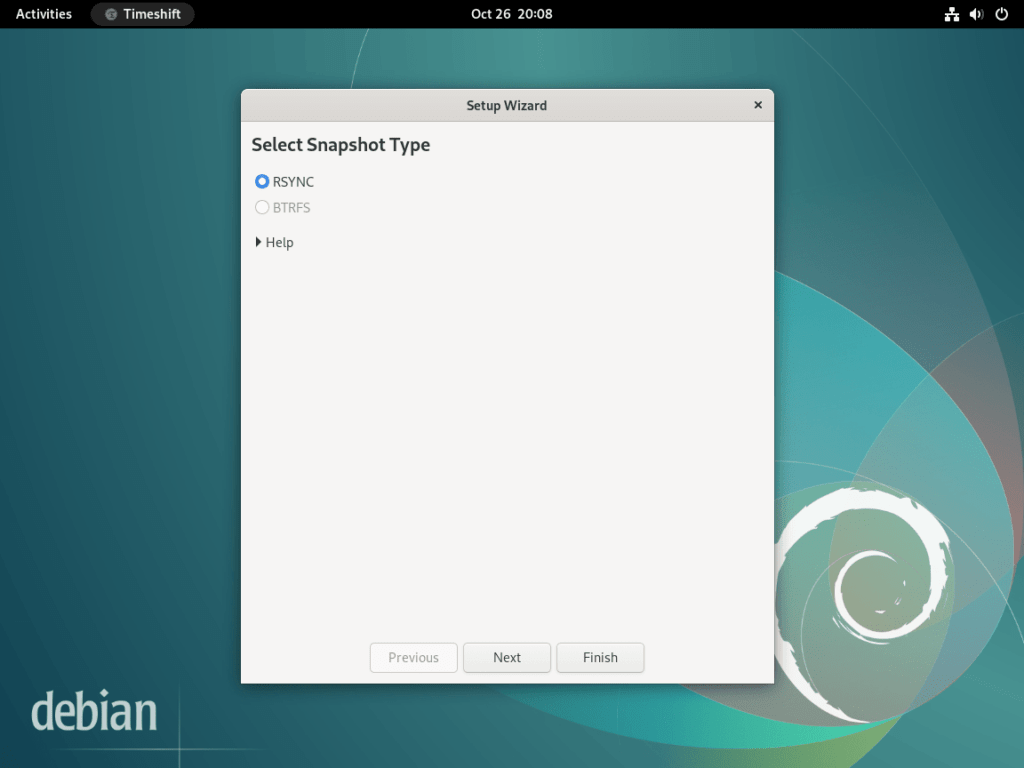
Step 2: Choosing the Right Snapshot Location
It is vital to select an appropriate location for your snapshots. Ensure that the chosen storage location has adequate space, as snapshots can consume significant disk space over time. Ideally, pick a location accessible and separate from your main system drive to safeguard against potential drive failures.
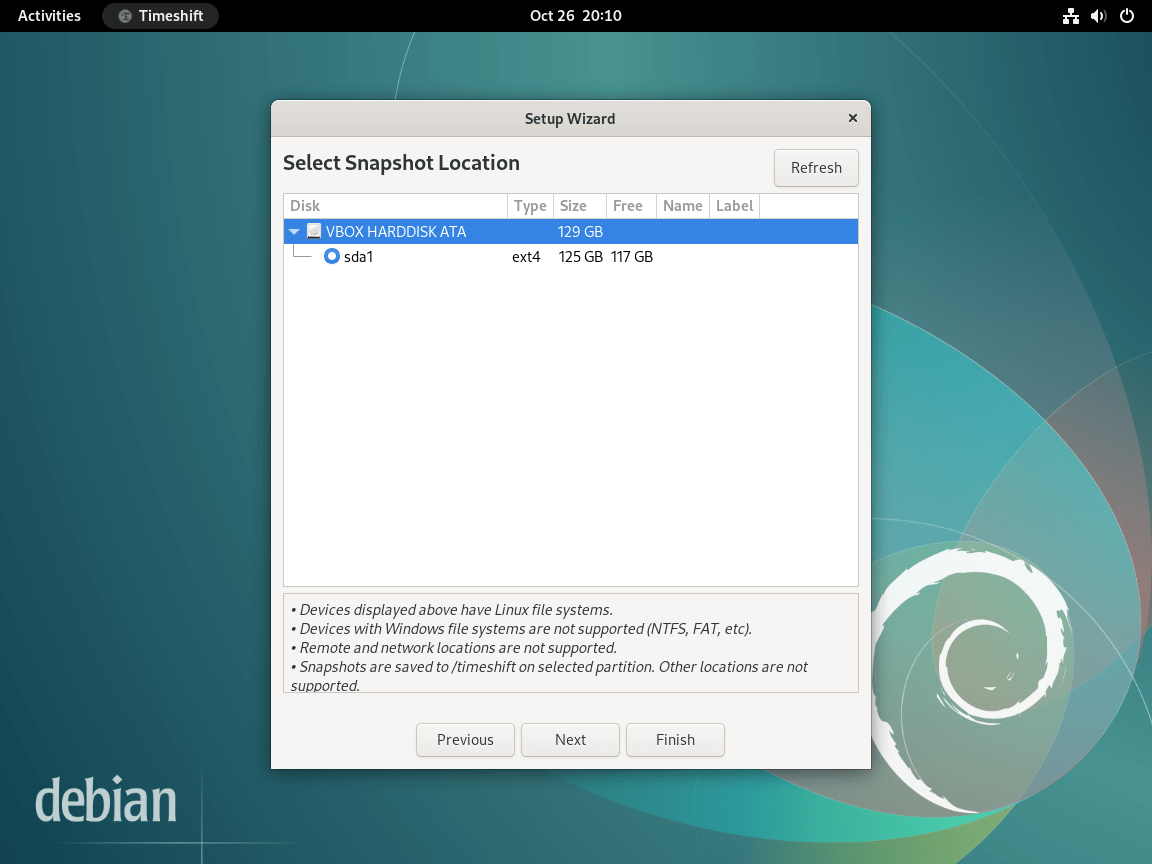
Step 3: The Importance of Scheduling Snapshots
To maximize the utility of Timeshift, it’s advisable to set up regular snapshot schedules. Scheduled snapshots serve as a safeguard, allowing users to revert to a stable state if a recent change causes system instability.
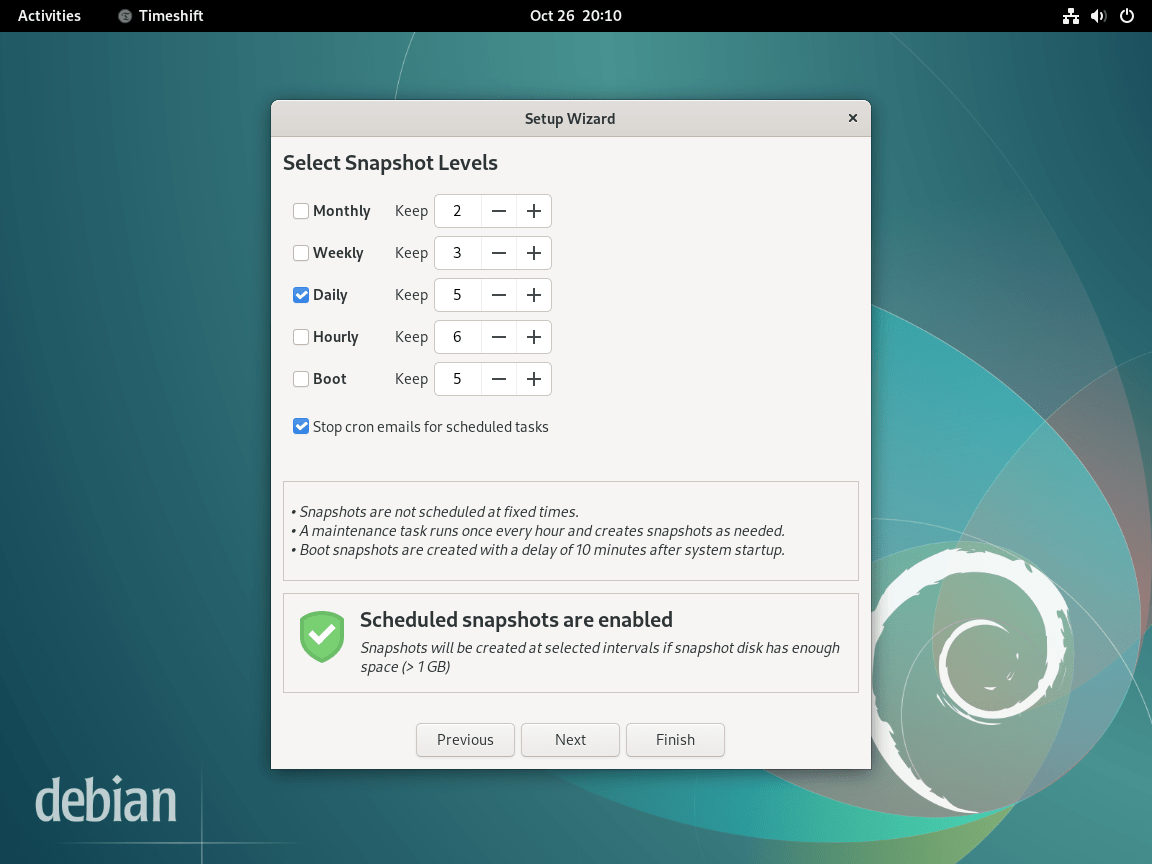
Step 4: Configuring User Home Directories
Timeshift offers flexibility in determining which user home directories should be included in the snapshot. Depending on your needs, you can include all user data or exclude specific directories to streamline the snapshot size.
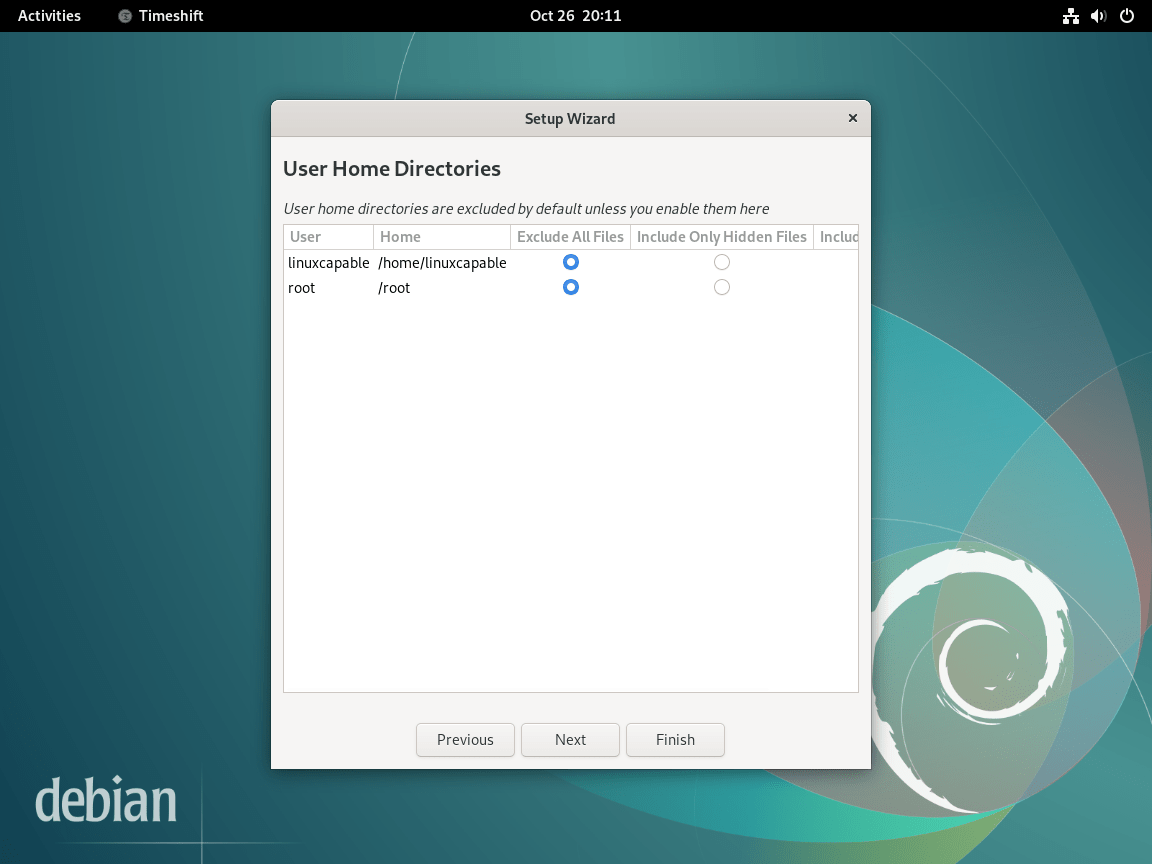
Step 5: Finalizing the GUI Setup
After configuring the settings above, the final step involves reviewing all configurations in the Timeshift graphical user interface (GUI). Ensure that all settings align with your requirements before confirming. Once set, Timeshift will take care of the rest, generating snapshots based on your preferences.
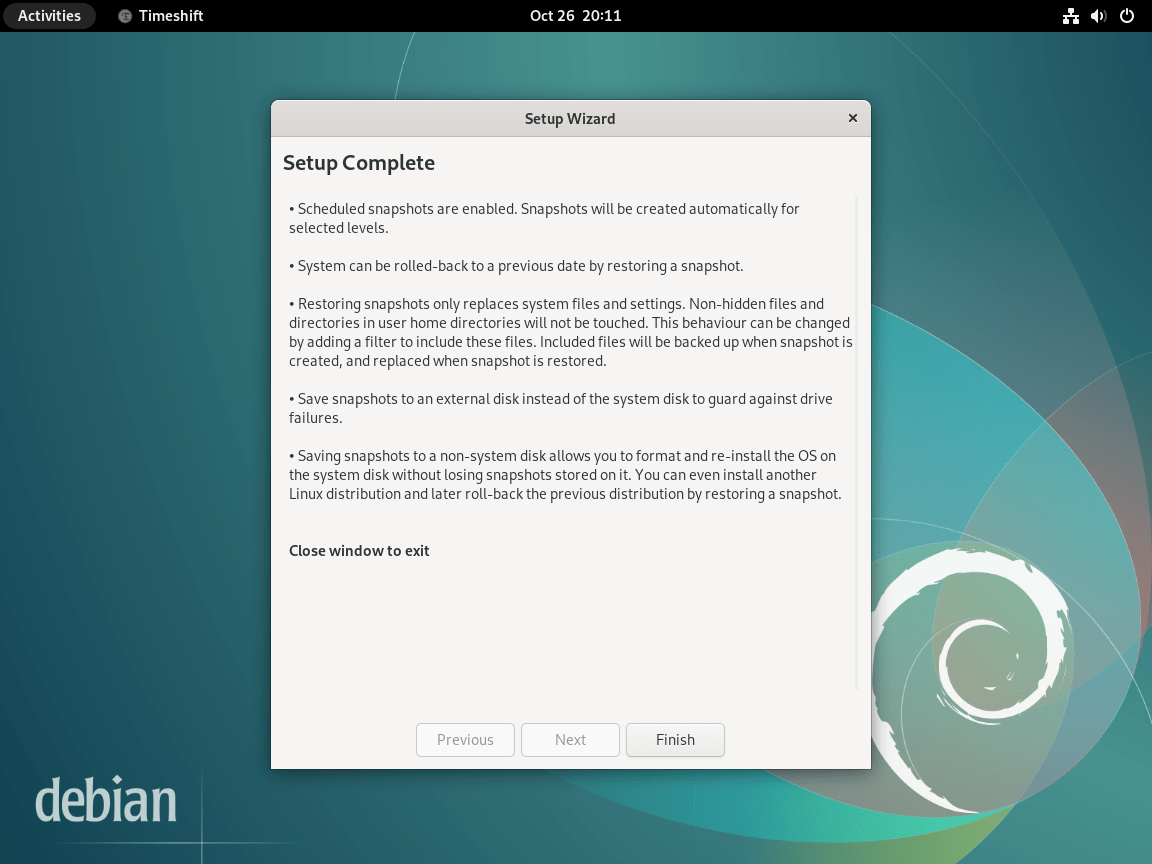
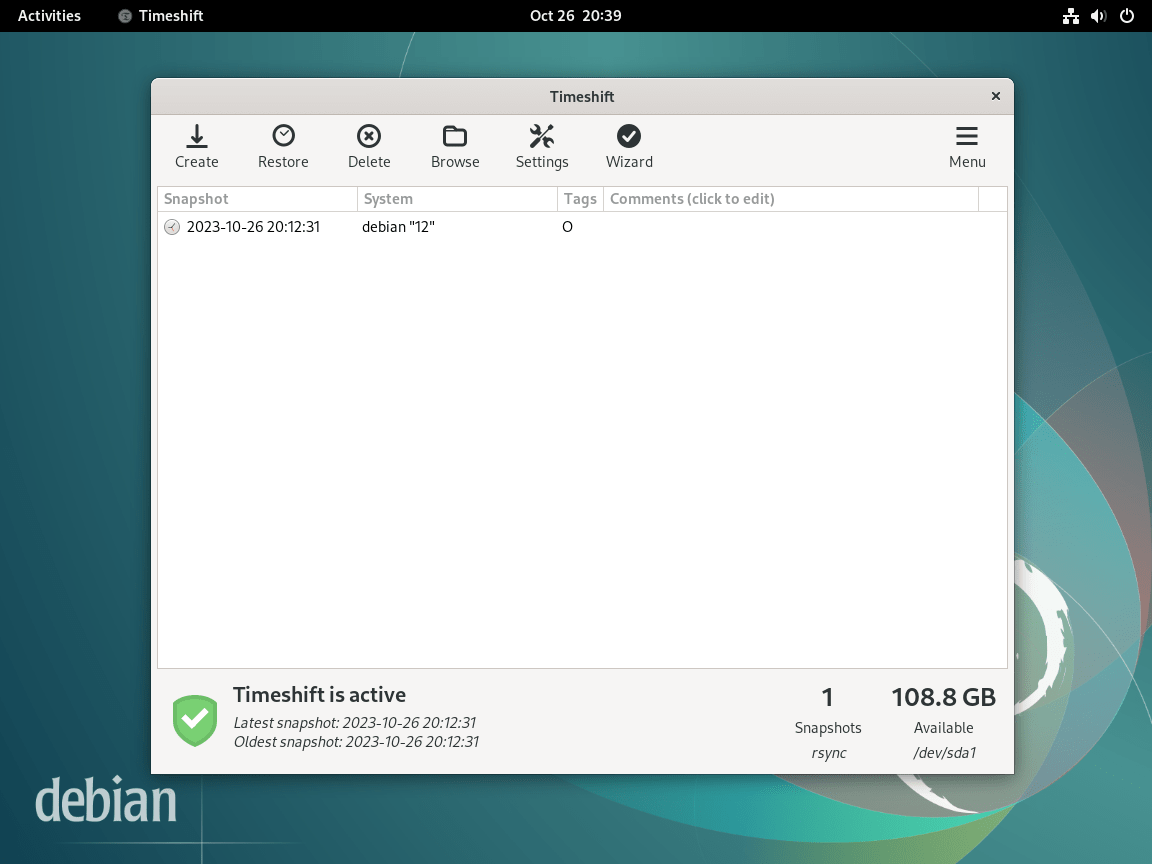
Additional Commands For Timeshift
Remove (Uninstall) TimeShift From Debian
Users without needing or requiring the backup software can easily remove this using the following command.
sudo apt remove timeshiftThe command will remove all data and dependencies, resulting in complete removal.
Conclusion
In wrapping up this guide, we’ve covered the essential steps to install and set up Timeshift on Debian Linux, spanning Debian 12 Bookworm, Debian 11 Bullseye, and Debian 10 Buster. The process, from terminal commands to the graphical installer’s initial setup wizard, is designed to be straightforward, ensuring users at all levels can secure their system with Timeshift’s snapshot capabilities. Whether utilizing BTRFS or RSYNC, Timeshift provides a reliable method for system restoration, making it a crucial tool for data protection on Debian systems.

